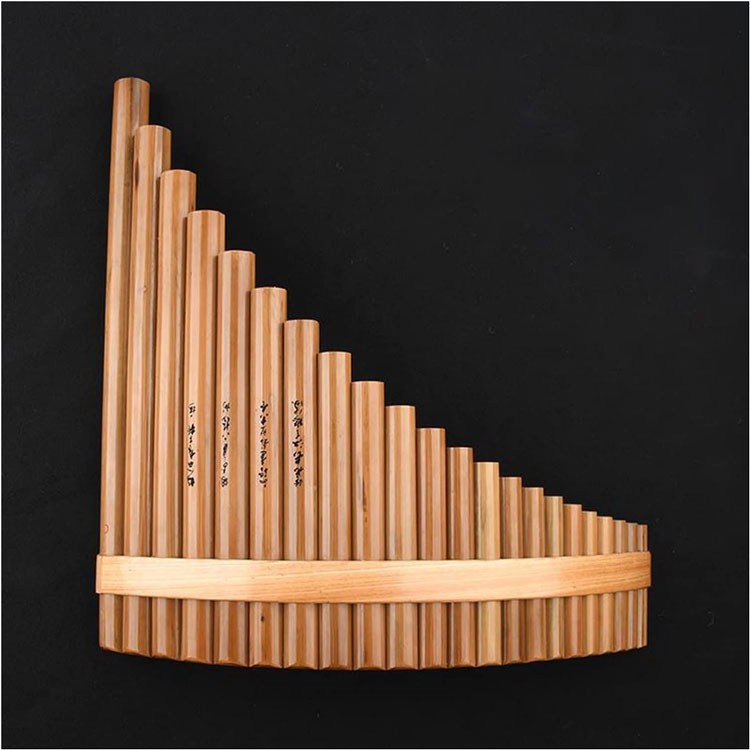(headline image: 22-pipe pan flute made out of bamboo)
The panpipe, also known as the pan flute, is a musical instrument that belongs to the family of wind instruments. It is made up of a bundle, or raft, of end-blown flutes of different pitches, without a mouthpiece. The player blows horizontally across the top of the pipes to produce sound. The panpipe is named after the Greek God, Pan, who is often depicted holding the instrument.

The panpipe has a rich history and can be found in various parts of the world, including South America, Oceania, Central Europe, and Asia.
In Europe, the panpipe was first popularized in Italy, particularly among the Etruscans. Greek panpipes, known as the syrinx, use pipes of the same length but stopped at different lengths with wax to alter the pitch.
Archaeological evidence of the pan flute can be found throughout Europe, with Viking panpipes dating back to the 10th century. The instrument has also been found in ancient Indian culture.
Playing the panpipe requires holding the instrument with both hands, with the longest pipe on the right. To produce a note, the player makes a slight smile, purses their lips, and blows down the top of the pipes. Each pipe corresponds to a different musical note. Different sounds can be created by pronouncing different letters like T, B, P, and D. Notes can be bent by tilting the flute away from the body while blowing, and a trilling sound can be achieved by fluttering the tongue while playing a note.
Panpipes have a long history and significant presence in South America and are deeply rooted in the region’s Andean musical traditions. Museums such as Göteborg, Ethnographisches Museum exhibit pre-Columbian pan flutes from this period, with evidence of their use between 300 and 1500 AD. Statues of people playing the panpipe can be found in countries like Mexico, Bolivia, and Peru.
In the Andean region, panpipes are commonly used in traditional music. The panpipes are known as siku, flauta de Pan, sikuri, antara, zampoña and fusa. They are often played alongside other instruments like bamboo flutes (quenas) and skin drums (bombos).

Traditional panpipes in South America were made from various materials, including ceramic, bone, reeds, and cane. In modern times, panpipes can be crafted from different materials, including wood, metal, clay, and plastic.
One of the most prominent pan flute players is Romanian virtuoso Gheorghe Zamfir who plays the nai, the Romanian pan flute. Zamfir plays a wide range of music, from traditional folk to western classical.
Other top players include Leo Rojas, Ulrich Herkenhoff, Damian Luca, Stefan Stanciu, Dana Dragomir and Daniela de los Santos.



Thank you for the article. Pan flute is still popular and new artists emerge every year, such as Romanian Florin Ștefan, which combines the suave sounds of the Nai with the energy of the electric guitar: https://youtube.com/playlist?list=OLAK5uy_m4xoz6s6ZyYvP99uXtc2_le9uNM2VDM4M&si=9zvz9_jRglZJRAdk